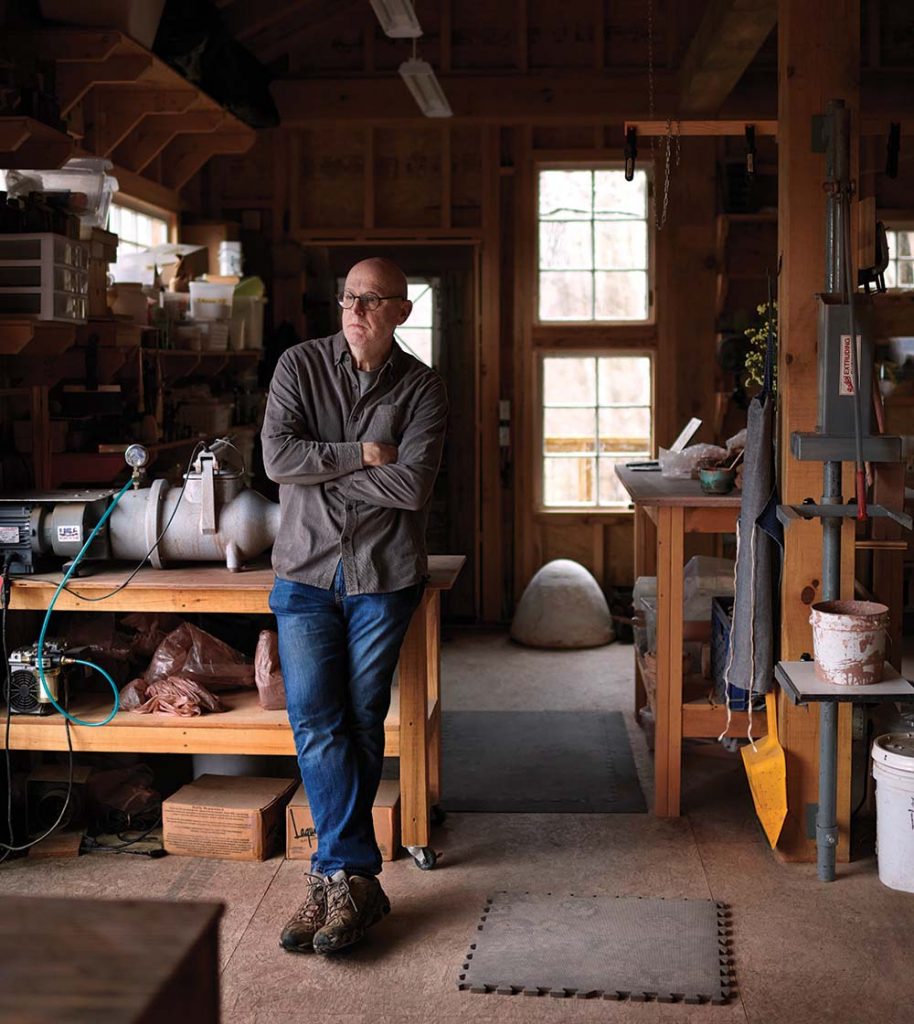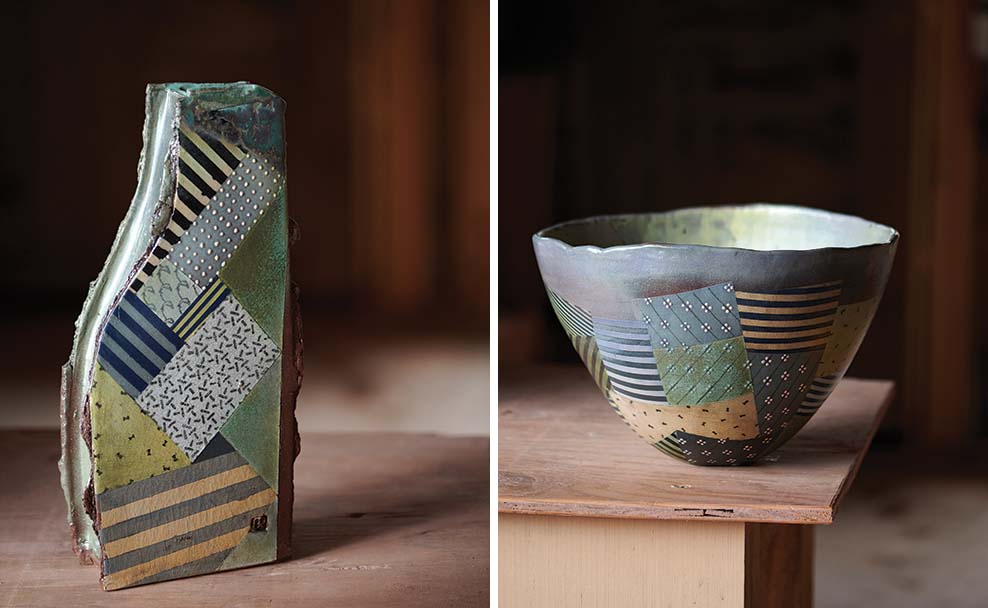
Physicist Barry Rhodes has been making functional art from earthy particles for 45 years — almost twice as long as he worked for the Centers for Disease Control in Atlanta before retiring. Four decades ago, Rhodes apprenticed in pottery at Callanwolde Fine Arts Center, under Rick Berman and Glenn Dair. He then got his Ph.D. at Emory University, teaching in Clark Atlanta University’s Department of Physics for a decade before working for the CDC. Today, resettled in rural Madison County northwest of Asheville, Rhodes devotes himself full time to his first love, ceramics, and his vessels are numbered in public and private collections throughout the country.

When did you start your journey into clay?
I took my first pottery class in the mid-’70s, while studying physics in grad school. Something clicked; it was a love-at-first-sight kind of thing.
What was the attraction?
I am drawn to work in clay because of the deep connection to the past, and the ability to express modern ideas of importance and move art “off the wall” and into our lives.
People are often instructed, “Don’t touch the art!”
Western culture tends to put art onto shelves and behind glass, into museums and galleries, and to separate it from everyday life. “Art is what you go to see in a museum” is an all too familiar refrain.
But rarely do we hear refrains about art made by scientists.
For me there are more fundamental similarities than differences between physics, computer engineering, and making art.
How so?
The fundamental problems are the same: how to take a set of individual elements and combine them into something that is greater than the sum of its parts.
Speaking of sums of parts, many of your designs resemble patchwork quilts.
Quilting is a big part of it. There’s a Japanese Boro cloth that was used by peasants to create clothing. They would pick little swatches of striped fabric and put them together with the stripes going different ways. My work also utilizes some of the same patterns that occurred in fabrics like kimonos.

How do you render those patterns in clay?
I use lots of masking tape, and paint with slips, which are liquid clays I create. Stripes are done with tape and dots are done with a squirt bottle. Some more complicated designs are done on an iPad, and then made into a rubber stamp.
There’s so much going on with these designs …
It started as a desire to combine linear and organic elements. I think of patchwork as inorganic and the glazing is organic, fluid, and somewhat drippy. Over 15 years or so it evolved to what it now looks like.
The textures seem to create a kind of visual movement.
My iconography is all about rhythms, which find their way into so much of physics and life — from music to string theory to the seasons to heartbeats to our very breathing. The rhythms for me become stripes or repeating patterns. I think of them as visual meditations.
All this seems a fitting metaphor for my life as well as my art.
Barry Rhodes, Marshall. The potter is represented by Flow (14 South Main St., Marshall); The Gallery at Flat Rock (2702-A Greenville Hwy., Flat Rock); and In Tandem Gallery (20 North Mitchell Ave., Bakersville). Rhodes is a member of the Potters of Madison County. For more information about the artist, see rhodespottery.com.